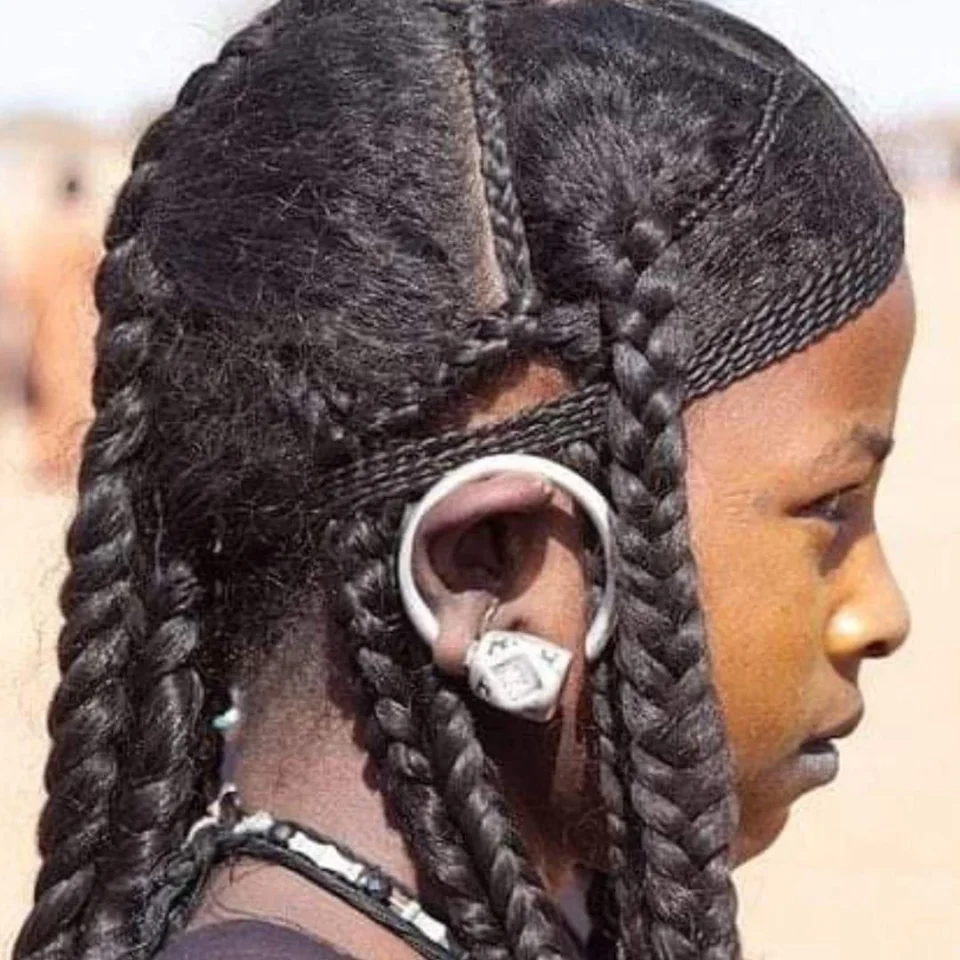Tuareg hairstyles are a profound expression of cultural identity, social status, and regional heritage.
Among the Tuareg people, hair serves as a canvas for intricate designs and symbolic meanings, reflecting the rich tapestry of their traditions.
Table of Contents
Turareg Hairstyles for Women
- Intricate Braids and Tresses: Tuareg women often fashion their hair into elaborate braids and tresses, which are artfully draped and folded over their heads. These styles are not merely aesthetic; they are deeply embedded in the Tuareg’s cultural identity, symbolizing various aspects such as marital status, social standing, and regional affiliation.
- Goffa: A distinctive hairstyle known as the Goffa is traditionally worn by married women, particularly in northern Mali and Niger. This style features braids interwoven with gold or silver adornments, known as Kurkuru, reflecting the perceived affluence of the wearer’s family. Historically, the Goffa was a symbol of prestige and costliness, limiting its use to a select few.
Men’s Hairstyles:
- Tagelmust (Litham): While not a hairstyle in the traditional sense, the tagelmust is a significant aspect of male Tuareg attire. This indigo-dyed cotton cloth, resembling a veil or turban, is worn by adult men and serves as protection against the harsh desert environment. The manner in which it is wrapped and folded often indicates the wearer’s clan and regional origin. The tagelmust is considered a mark of manhood and is worn only in the presence of close family.
Cultural Significance:
Hairstyles among the Tuareg are more than just fashion statements; they are deeply intertwined with cultural identity and social structures. The styles and adornments can signify marital status, social standing, and regional affiliation, serving as visual markers of identity and community belonging. These practices highlight the Tuareg’s intricate relationship with personal appearance and cultural expression.
In essence, Tuareg hairstyles are a testament to the community’s rich cultural heritage, blending artistry with profound social significance.
Tuareg braids are a distinctive and culturally rich hairstyle originating from the Tuareg people, a Berber ethnic group native to the Sahara and Sahel regions of North Africa, including countries like Mali, Niger, Algeria, and Libya.
These braids are more than just a fashion statement; they are deeply embedded in the Tuareg’s cultural identity, symbolizing various aspects such as marital status, social standing, and regional affiliation.

Cultural Significance of Tuareg Braids
Among the Tuareg, hairstyles, including braids, serve as important cultural markers. For instance, the Goffa is a traditional hairstyle worn exclusively by married women.
It features intricate braids interwoven with gold or silver adornments known as Kurkuru, reflecting the perceived affluence of the wearer’s family. Historically, this hairstyle was a symbol of prestige and was reserved for a select few.
The Goffa is often referred to as “the hairstyle of the queens,” emphasizing its association with dignity and honor within Tuareg society .
Traditional Styling Techniques
Creating traditional Tuareg braids involves meticulous techniques passed down through generations.
The process often includes:
- Preparation: Starting with clean, dry hair. Some individuals apply a small amount of hair gel to make the hair easier to work with.
- Sectioning: Dividing the hair into sections to create uniform braids.
- Braiding: Weaving the hair into intricate patterns, often incorporating beads, shells, or silver jewelry to add adornment and signify cultural identity.
- Finishing: Securing the braids and ensuring they are styled to reflect the individual’s social and cultural status.
These braids are not merely aesthetic; they are a form of storytelling and identity expression, reflecting the wearer’s personal and familial history.
Contemporary Influence
In recent years, Tuareg-inspired braids have gained popularity beyond the Sahara, influencing global fashion and hairstyle trends. Social media platforms like TikTok and Instagram showcase these styles, often blending traditional techniques with modern aesthetics. For example, videos and posts highlight the intricate braiding techniques and unique cultural styles associated with Tuareg hairstyles.
Photo Credits: Electrical_Maybe_394